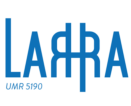Scope note for the class Temporal Reference System – SP11 Back
Candidate
Scope note
- Text
This class compromises systems(S) that are used to describe positions and extents in a Reference Time. If relativistic effects are negligible in the wider spacetime area of interest and the speeds of associated things, then there is only one unique global reference time. The typical way to measure time is to count the cycles of a periodic process for which we have a hypothesis of constant frequency, such as oscillations of a crystal, molecular arrangement, rotation of earth around itself or around the sun. The origin for a Temporal Reference System is fixed on a reference event. As long as the number of cycles passed from that reference event until now are known, the temporal reference system exists (E) and expressions in this Reference System can be interpreted with respect to the Reference Time.
A temporal reference system represents time as a continuous linear interpolation over the infinit series of cycles extended from the reference event to he past and the future, regardless of the temporal position of the mathematical point zero of an instance of E61 Time Primitive, such for instance the gregorian calender begins with the event an arbitrary positiong the point zero as beeing the date of the „Birth of Christ“. The actual date of birth of christ is regarded to be unknown and therefor is not the reference event.
The identity of a Temporal Reference System is defined through the type of periodic process it is based on, the reference event and through the distance of the reference event to the position of the mathematical point zero (I).
A value in the Reference Time is a temporal position measured relative to a temporal reference system. ISO 8601 specifies the use of the Gregorian Calendar and 24 hour local or Coordinated Universal Time (UTC) for information interchange.
In ISO 19108 three common types of temporal reference systems are explicitly stated: calendars (used with clocks for greater resolution), temporal coordinate systems, and ordinal temporal reference systems.
Calendars and clocks are both based on interval scales. A calendar is a discrete temporal reference system that provides a basis for defining temporal position to a resolution of one day. A clock provides a basis for defining temporal position within a day. A clock must be used with a calendar in order to provide a complete description of a temporal position within a specific day. Every calendar provides a set of rules for composing a calendar date from a set of elements such as year, month, and day. In every calendar, years are numbered relative to the date of a reference event that defines a calendar era [ISO 19108].
Specifying temporal position in terms of calendar date and time of day complicates the computation of distances between points and the functional description of temporal operations. A temporal coordinate system may be used to support applications of this kind. [ISO 19108].
Ordinal temporal reference systems as specified in ISO 19108 are no instances of SP11 Temporal Reference Systems as they do not define cycles of a periodic process but define a system of time intervals based on reverence periods related to certain natural or cultural phenomena.
- Language
- en




Comments
No comment found.